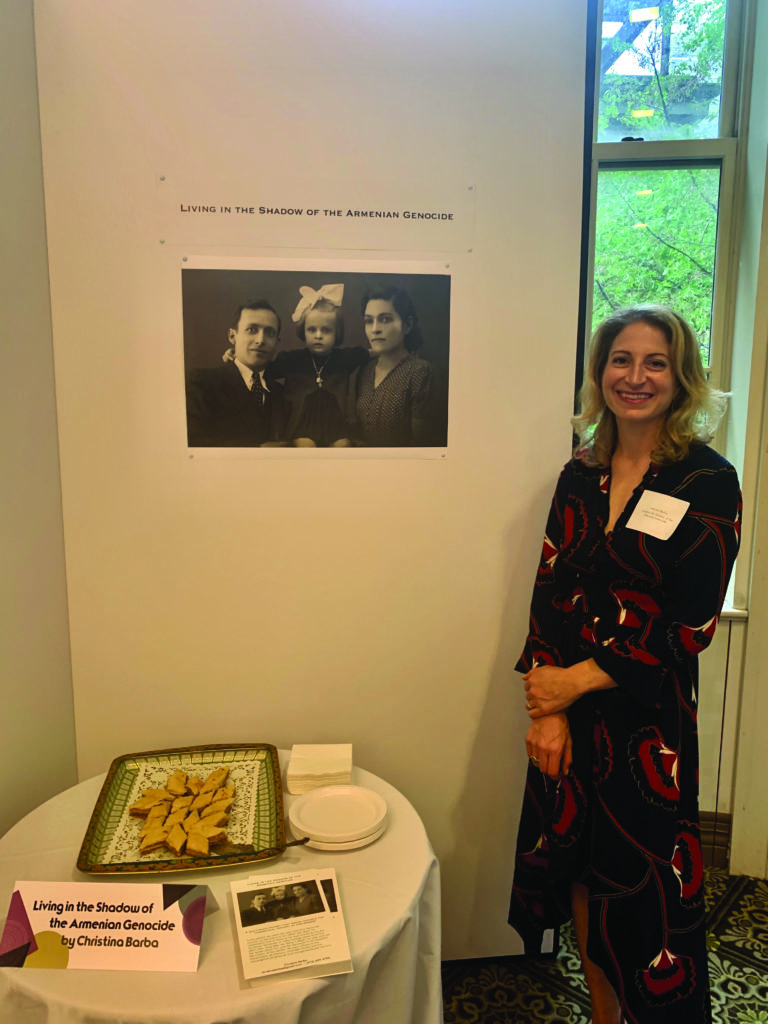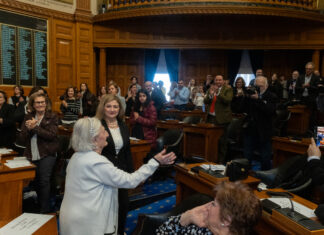NEW YORK — As the world commemorated the Armenian Genocide throughout the month of April, families reflected on the struggles and survival of their parents and grandparents, keeping the memory of their ancestors alive, while also seeking further meaning in their testimonies and exploring how their memory and trauma passed on to succeeding generations.
In this vein, Christina Barba, Esq., a cohort in the Oral History Master of Arts program at Columbia University, unveiled her multimedia interactive history exhibit, “Living in the Shadow of the Armenian Genocide,” during Inter/views: An Interactive Oral History Exhibit on Friday, April 26 and Saturday, April 27, at Columbia University’s Faculty House.
The aptly-titled project is a seven-minute video Barba created that brought to life the concept of post-memory through video footage, photos and narration, weaving together three generations of voices: her grandfather Andranik Donpet Vartanian, who was born in Mush in 1900 and at the age of 15 became an Armenian Genocide survivor; his only child, Susan Vartanian Barba, born in Tehran in 1939 and later immigrated to the United States; and Susan’s daughter, Christina Barba, born in New Jersey in 1979.
“A goal I had in creating the video was to make explicit the legacy that my mother carries as the child of a genocide survivor and implicit in the work is the legacy that I carry,” said Barba, an attorney who works in the public sector. “My legacy as a granddaughter of a genocide survivor has been a deeply-rooted motivator throughout my adult life.”
It was this impetus that enabled Barba to have a deep interest in conveying the oral histories of second-generation Armenian Genocide survivors, like her mother, and it was a subject she was sure of pursuing when enrolling at Columbia. As a participant of the Oral History program, Barba liked the idea of a “dialogic encounter about the past where the interviewee is given authority.”
“I always knew that I wanted to do something with my mother’s story, who worked with my grandfather in taking his testimony” said Barba. “It was kismet when I came across my grandfather’s video footage and I was positive I wanted to include it in my exhibit.”











